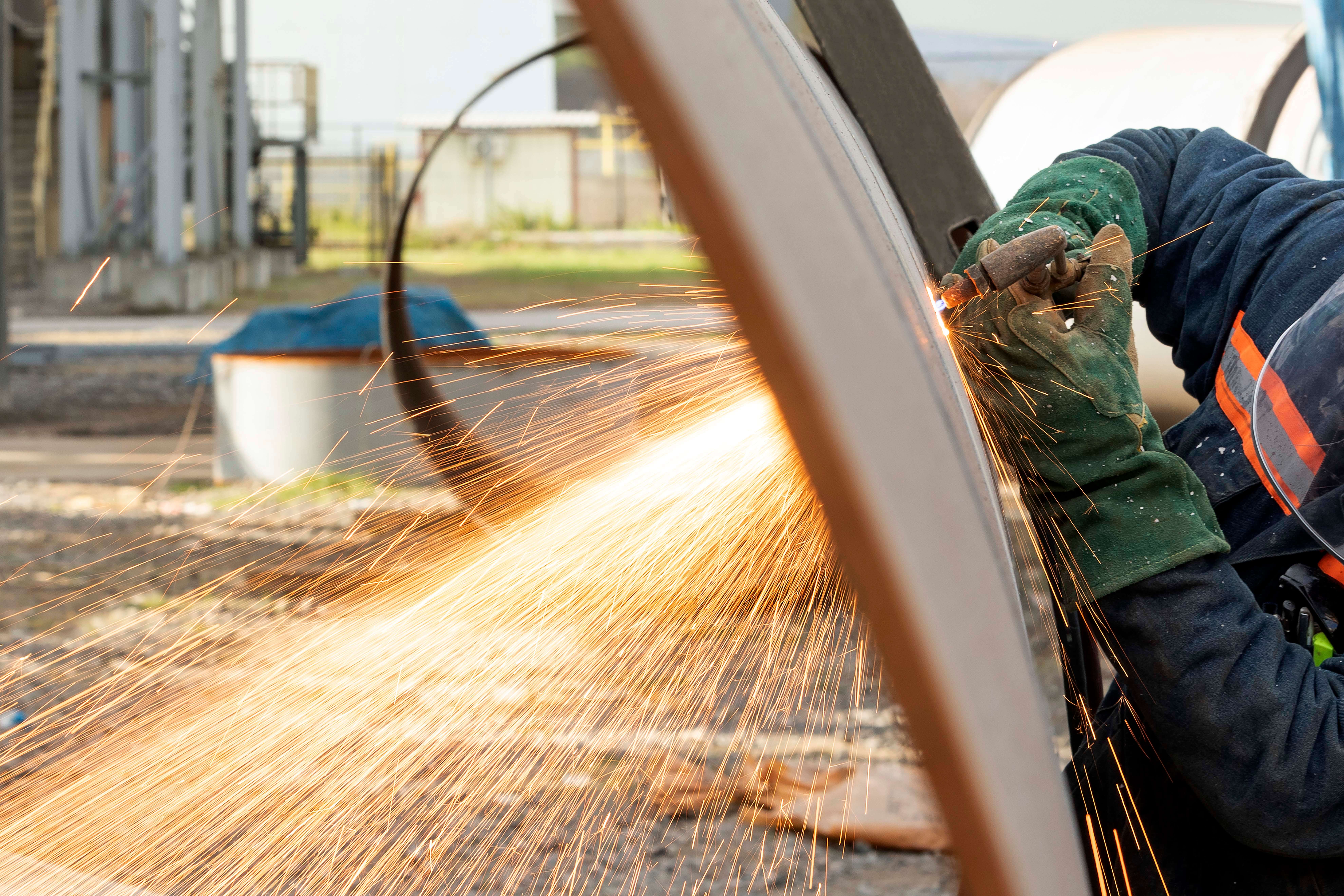
Author: Ryan Donovan
National Fire Protection Week, observed October 3-9 this year, is a good reminder of the importance of being prepared for fires on industrial construction jobsites.
From 2010-2014, the National Fire Protection Association (NFPA) reported an average of 8,440 fires per year in buildings under construction, renovation and demolition, resulting in more than $300 million in direct property damage. As an ever-present danger during construction, fire prevention and response planning should undergird every aspect of project planning.
Heat, fuel, and oxygen are the trifecta of fire potential, and active construction sites tend to have all three in abundance. Industrial construction projects contain many opportunities for fires because of combustible materials, welders, torches, and other hot work and electrical equipment on-site, and because fire prevention, detection, and response systems are usually among the last installations. Fire protection and prevention planning is covered in OSHA standard 1926-150, and can help guide industrial contractors in preparation.
Here’s a brief list of fire protection best practices. Please Note: this is only an overview and should not replace in-depth investigation and planning.
Risk and hazard analysis is the starting point for a fire-safe worksite. Site assessment should identify sources of ignition, such as smoking cigarettes, electrical equipment, flammable liquids and gases, trash and debris, oxygen sources, site airflow and any special considerations such as hot work and arc flash potential (read more about arc flash here >).
Identifying those at risk comes next. Because crews are exposed to varying risks at different locations on a job, there is no one size fits all fire safety solution. Know where workers are located and the specific concerns for each area, including access to safe evacuation routes. Remember that fire may cause structural collapse; be aware of crews working above or below any given location and plan accordingly.
Use your analysis and evaluations to reduce fire risk by controlling sources of ignition and the availability of fuel and excess oxygen. Inspection and clean-up of work areas should happen on a daily schedule.
Document your findings and use them to train workers according to the comprehensive, project-specific fire safety plan you have created. Refresher training may be carried out as needed.
Constant monitoring and reevaluation are absolute requirements for a safe work environment. Construction sites are in a constant state of change, and what worked at one point in the process will likely change as the project progresses.
While all these are important considerations, a few merit particular attention.
Hot work
Hot work is a common feature of most every construction project. Potential hazards from fumes, gases, high voltages, sparks, and heat are ever-present and require specialized knowledge, training, personal protective equipment (PPE), and procedures for safety.
An effective control program for hot work areas includes assessment of risks, an inspection of equipment (including PPE), placement and inspection of fire extinguishers appropriate to the job, and permits issued under the OSHA Hot Work Permit program. A designated person should head up the program and remain on-site a minimum of 30 minutes after hot work has ended.
Fire reporting
In the event of a fire, a quick response can mean the difference between a minor incident and major losses. Crews should be trained in fire response and a designated person and backup person should be responsible for sounding the jobsite alarm and notifying the appropriate fire department. Identifying the proper fire department and communicating with them about the project and location specifications must be completed before the project gets underway, along with any changes to those specifications as work moves forward. Never assume the designated fire department knows where the project is located; industrial contractors must assess and confirm the department’s understanding of the project’s location and how they will respond in the event of a fire.
Evacuation
Fire safety procedures not only focus on preventing and fighting worksite fires but also include planning for crew member evacuations. Evacuation plans should be created only after a thorough assessment of the area under consideration and communicated to all crew members. Signage that clearly shows evacuation routes should be posted prominently throughout the worksite. Establish a designated point for crew members to gather in the event of fire and use a checklist to account for every person.


